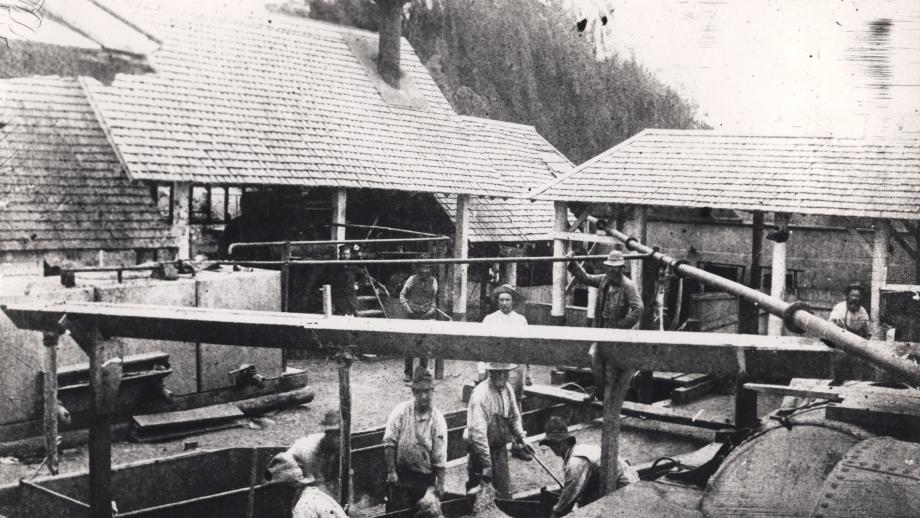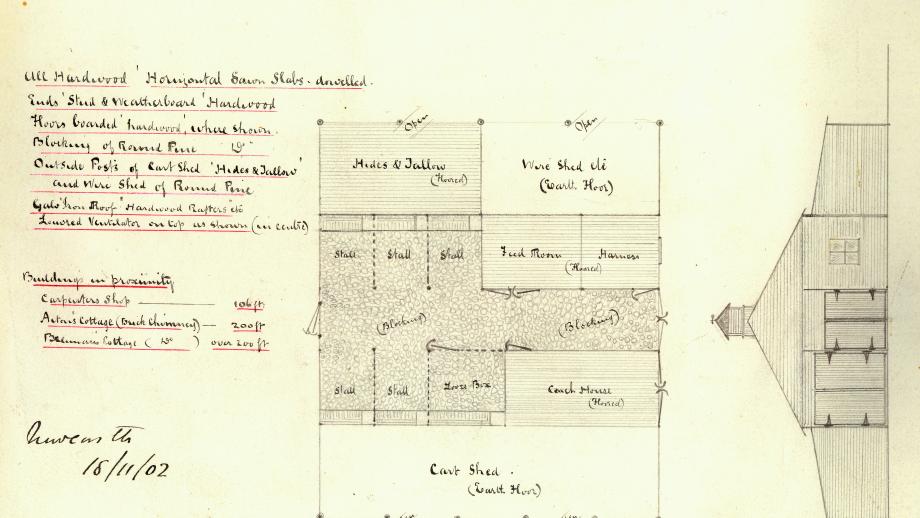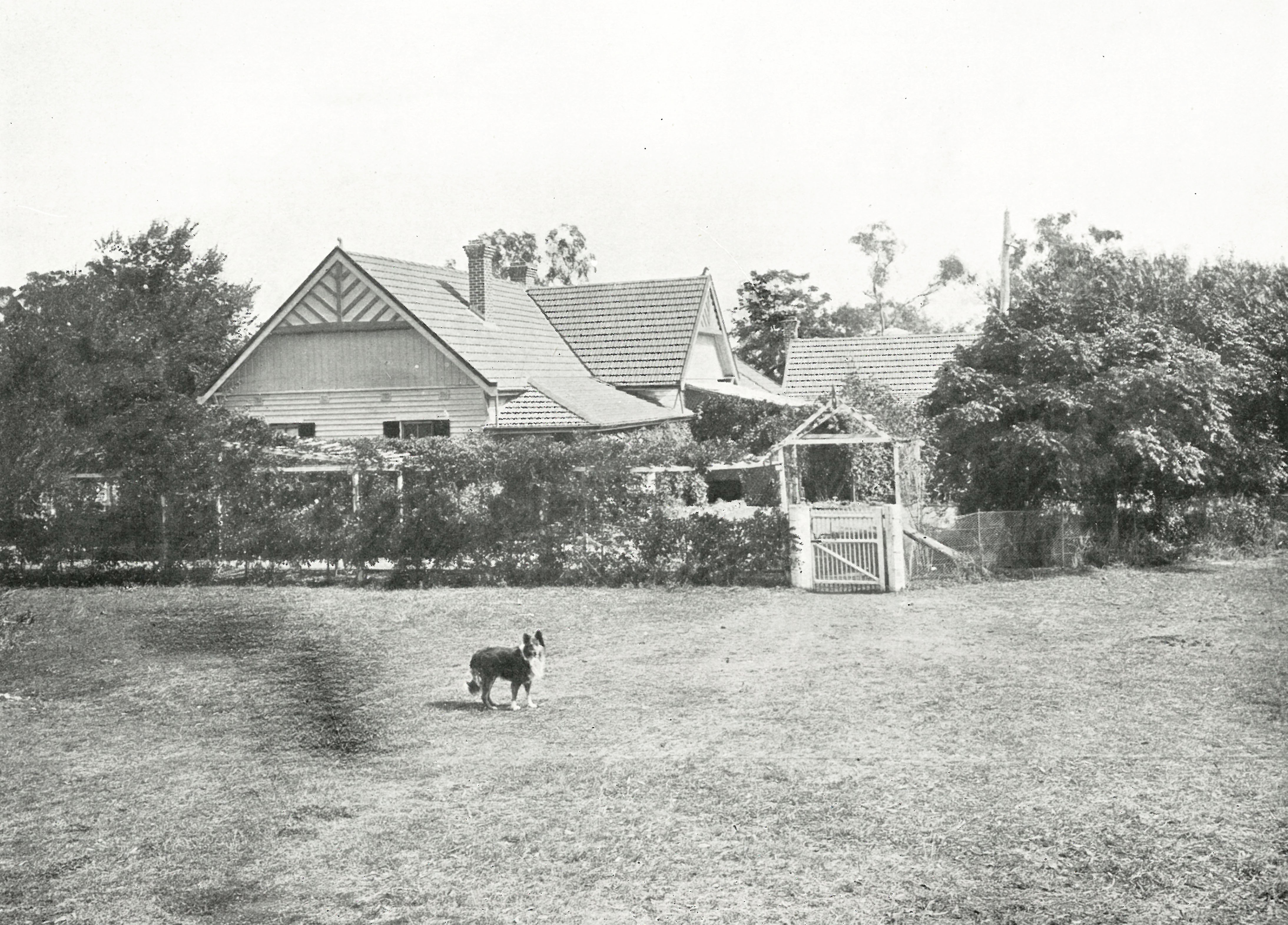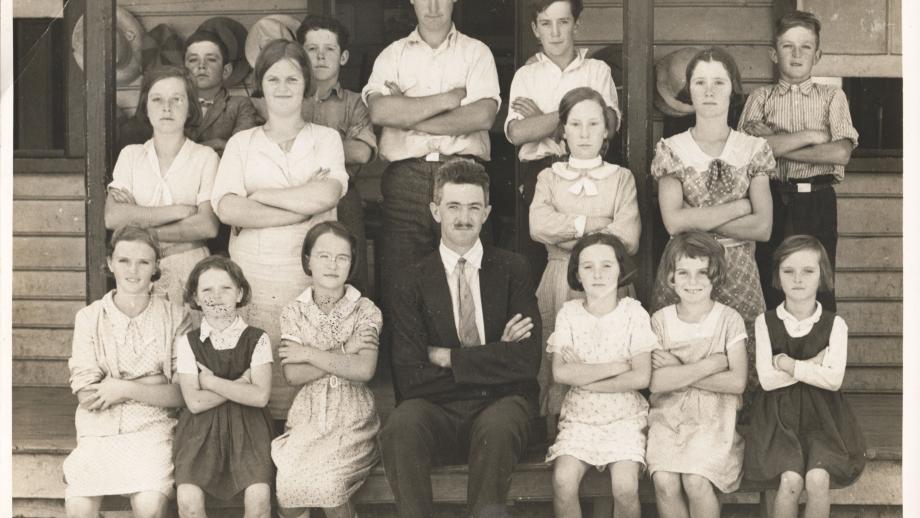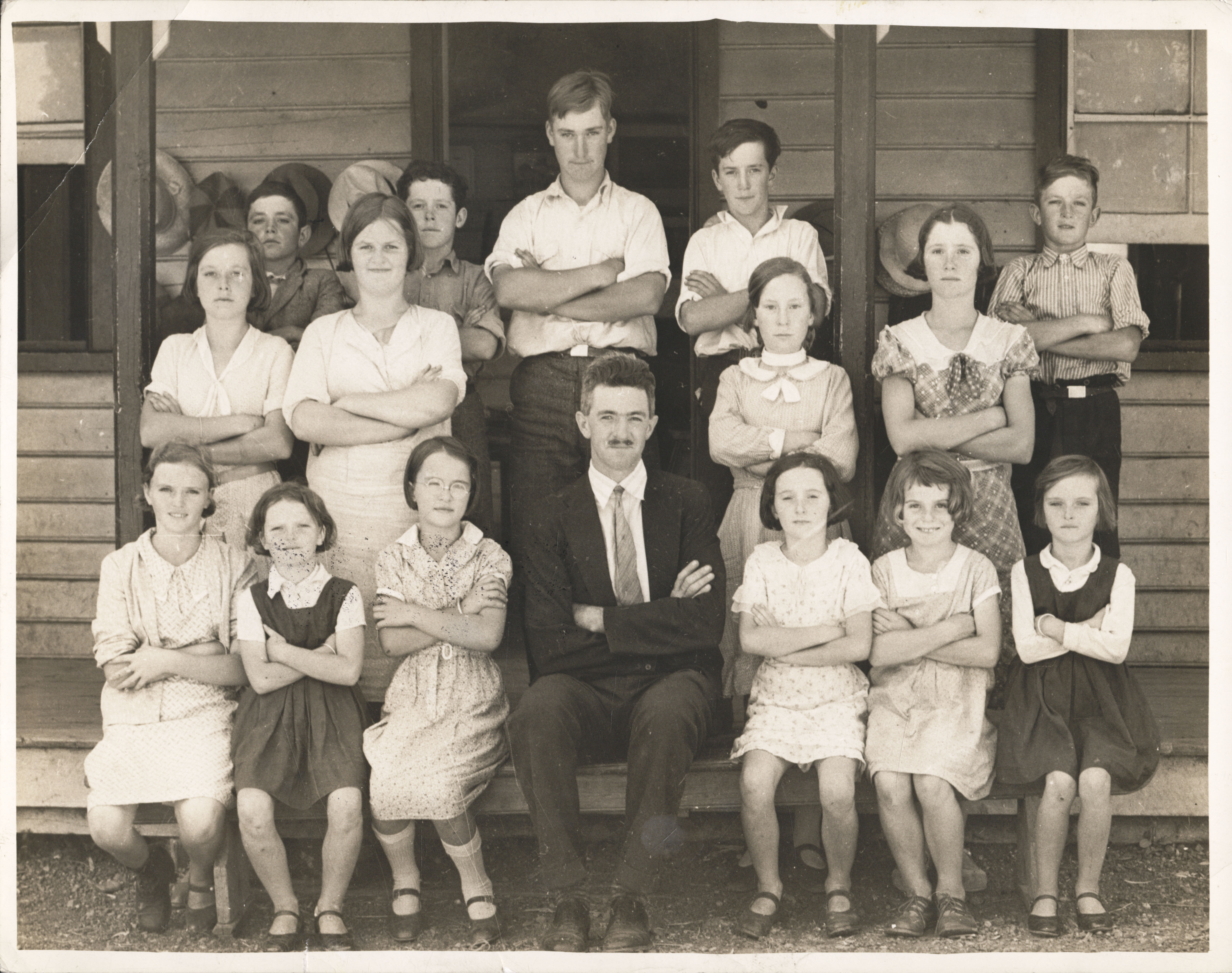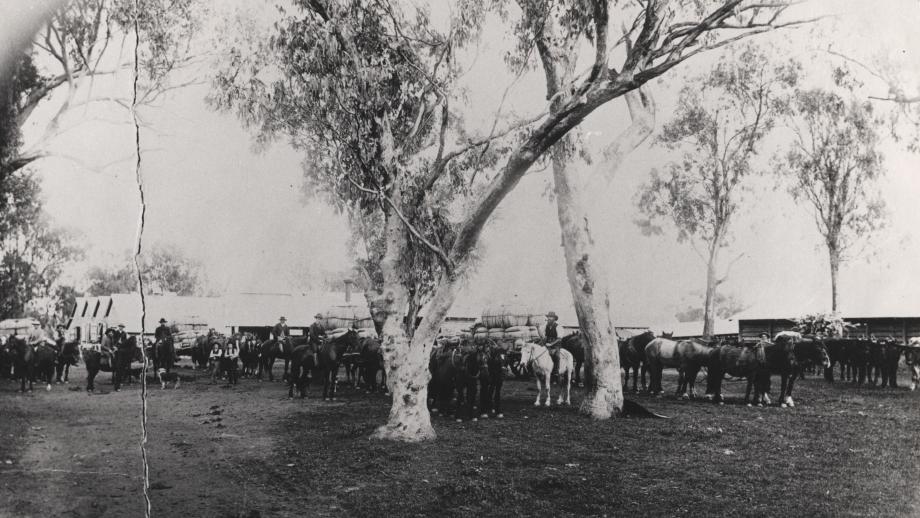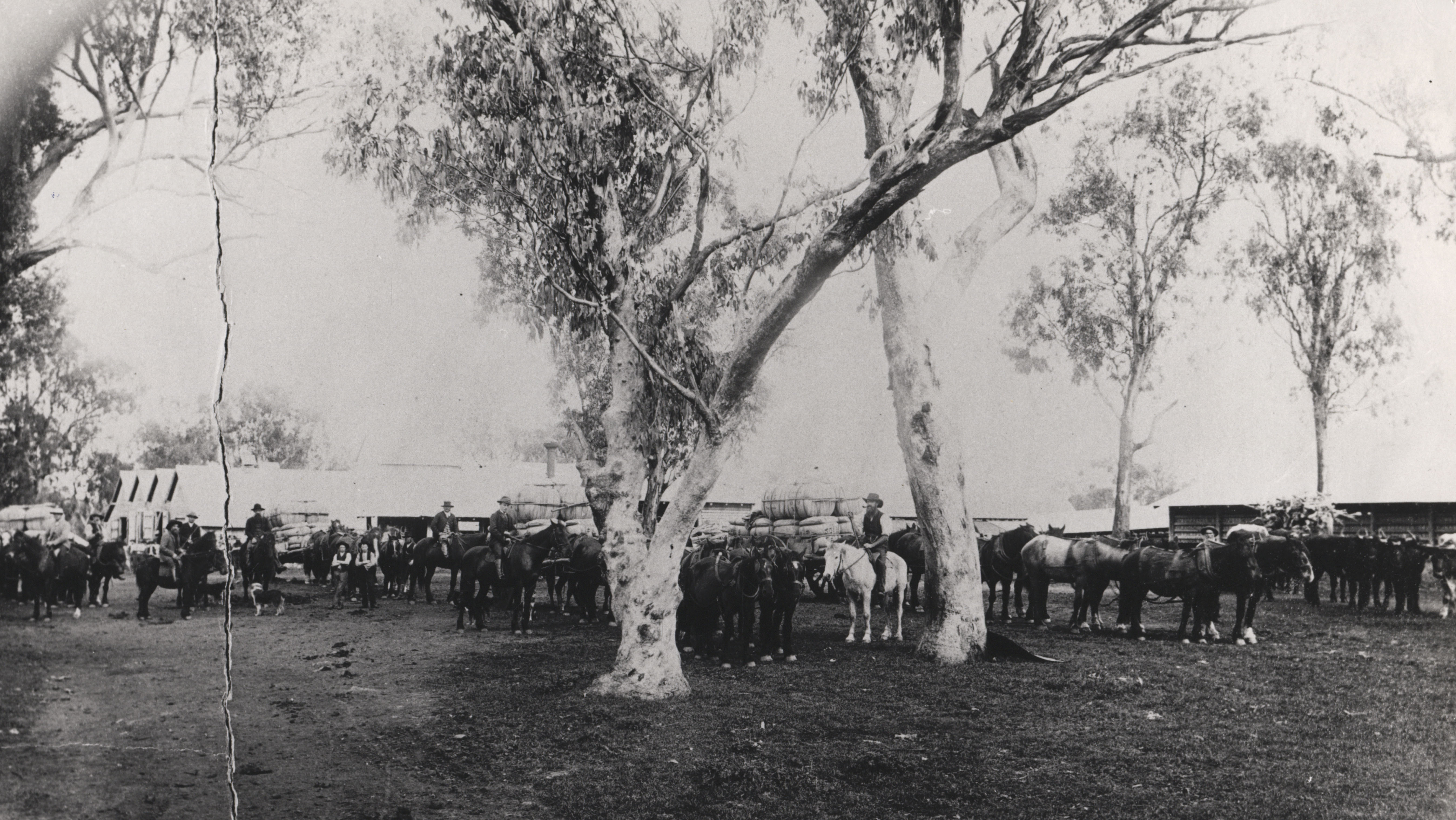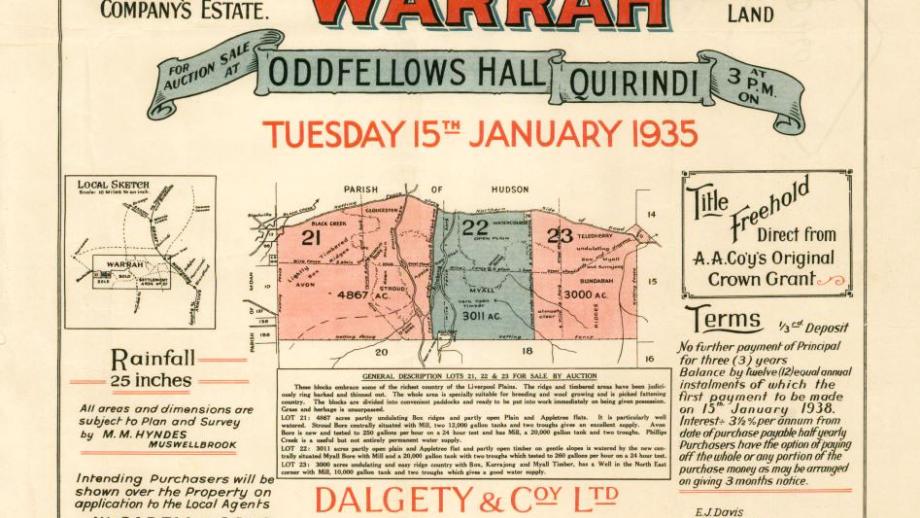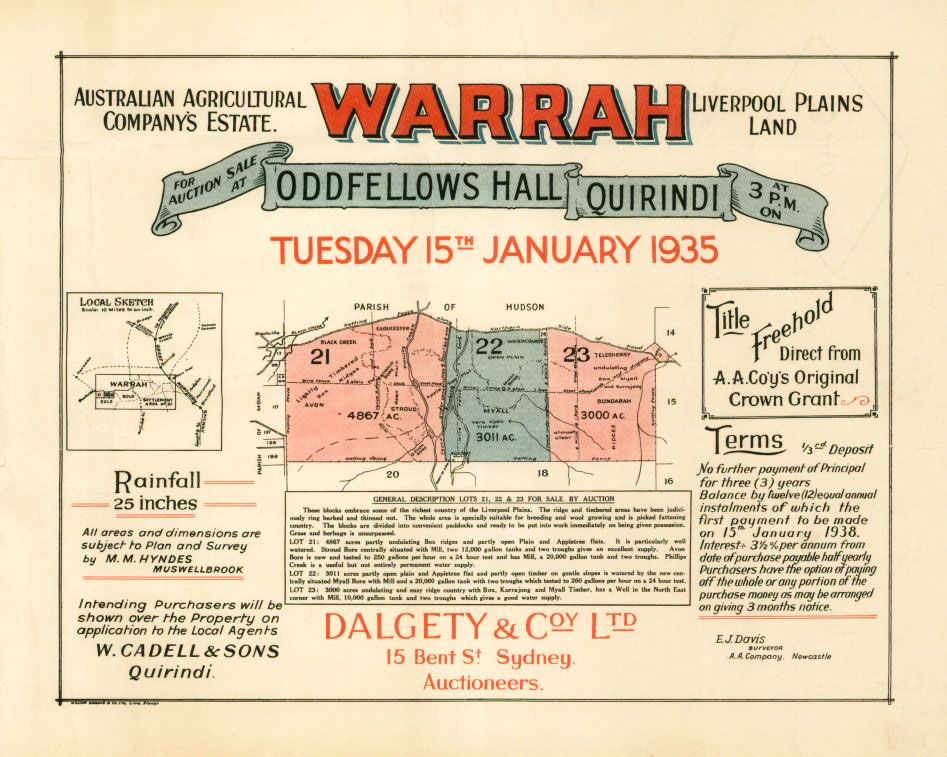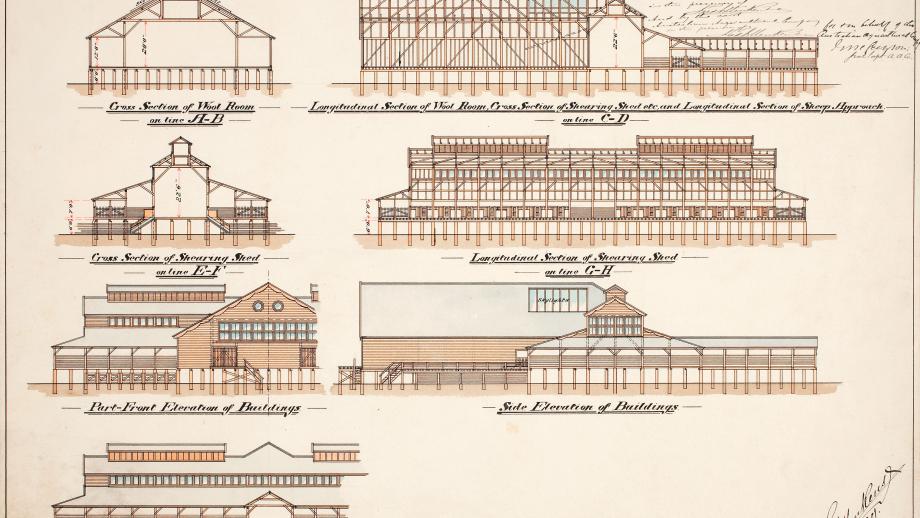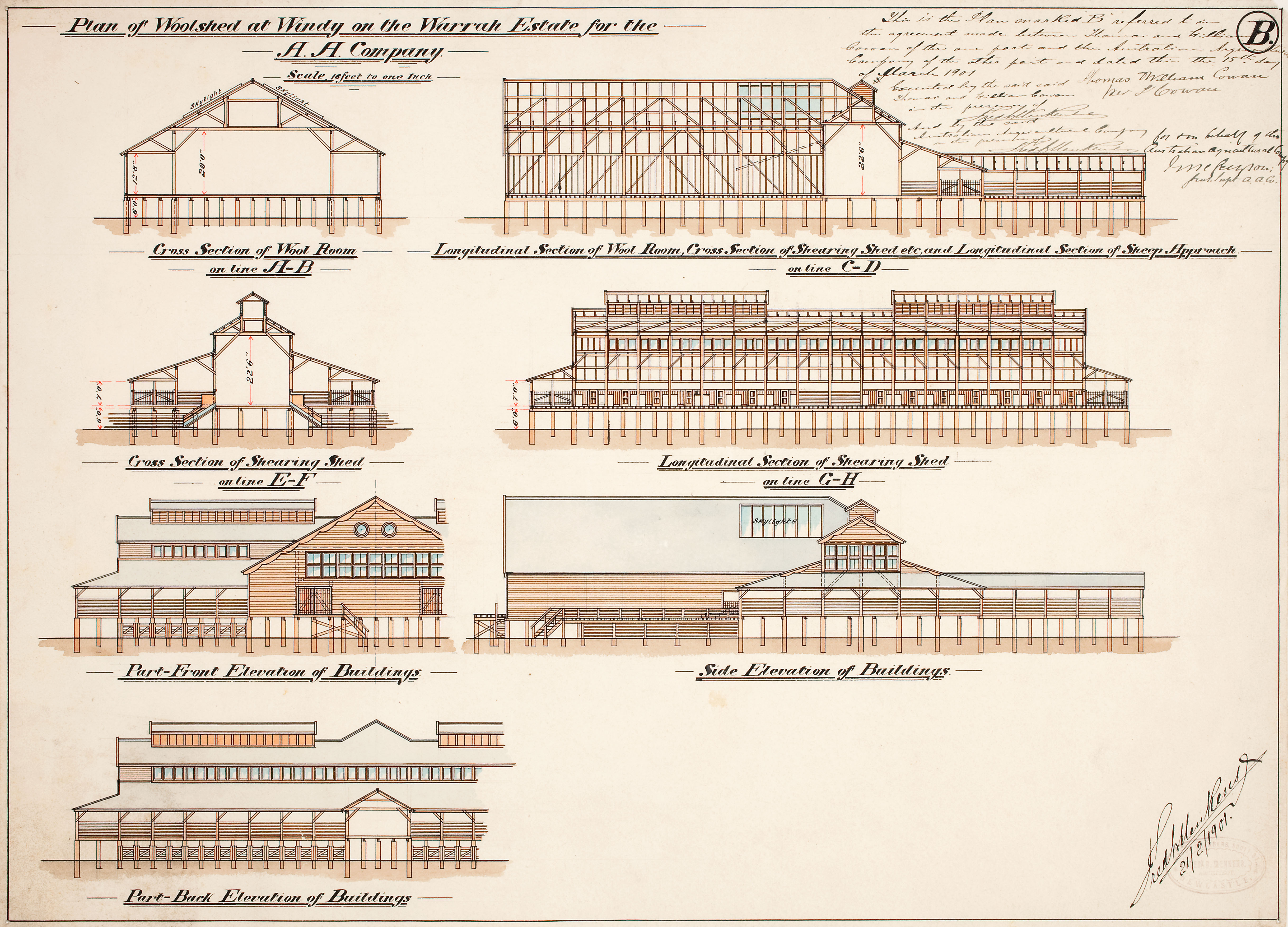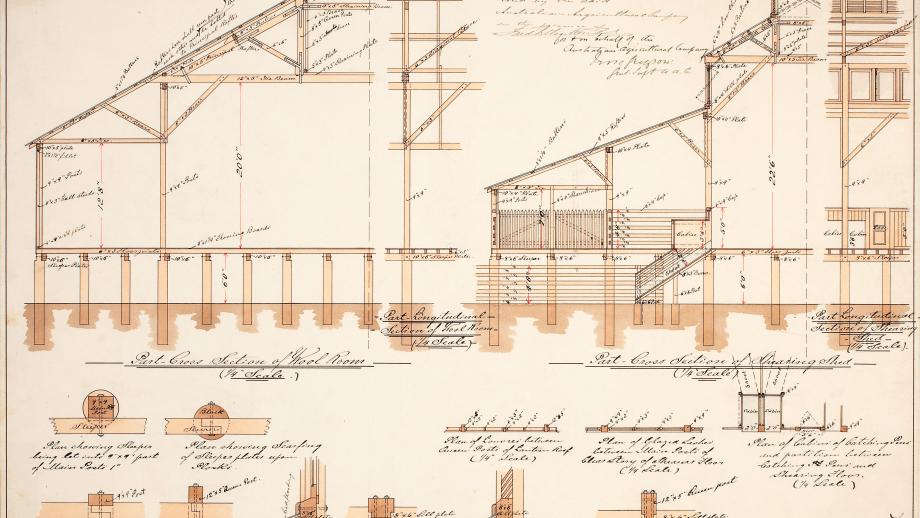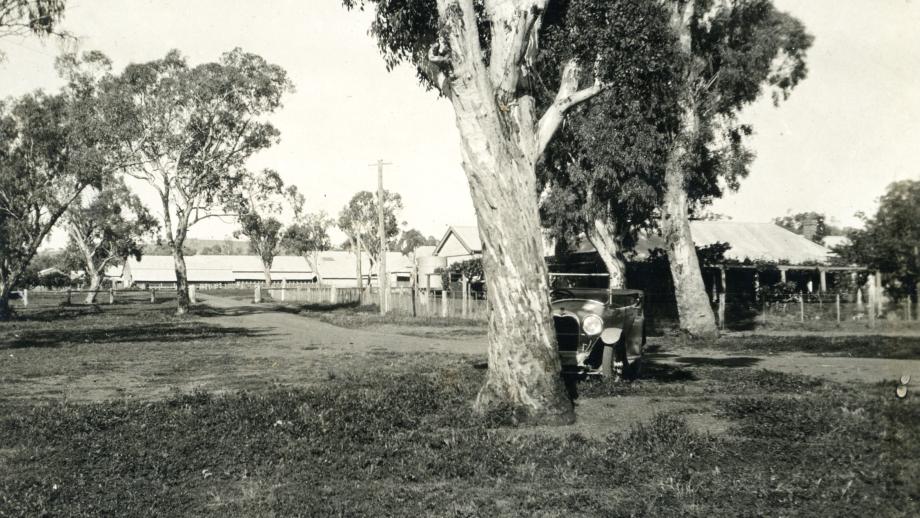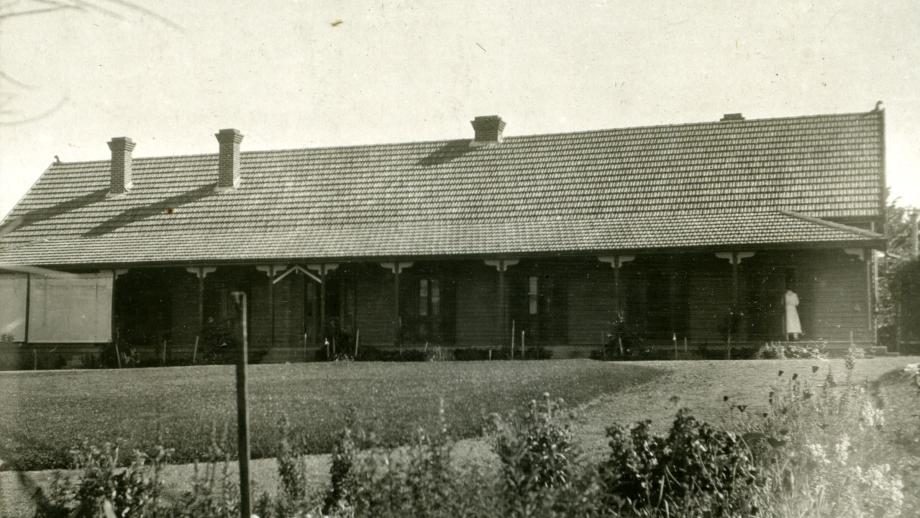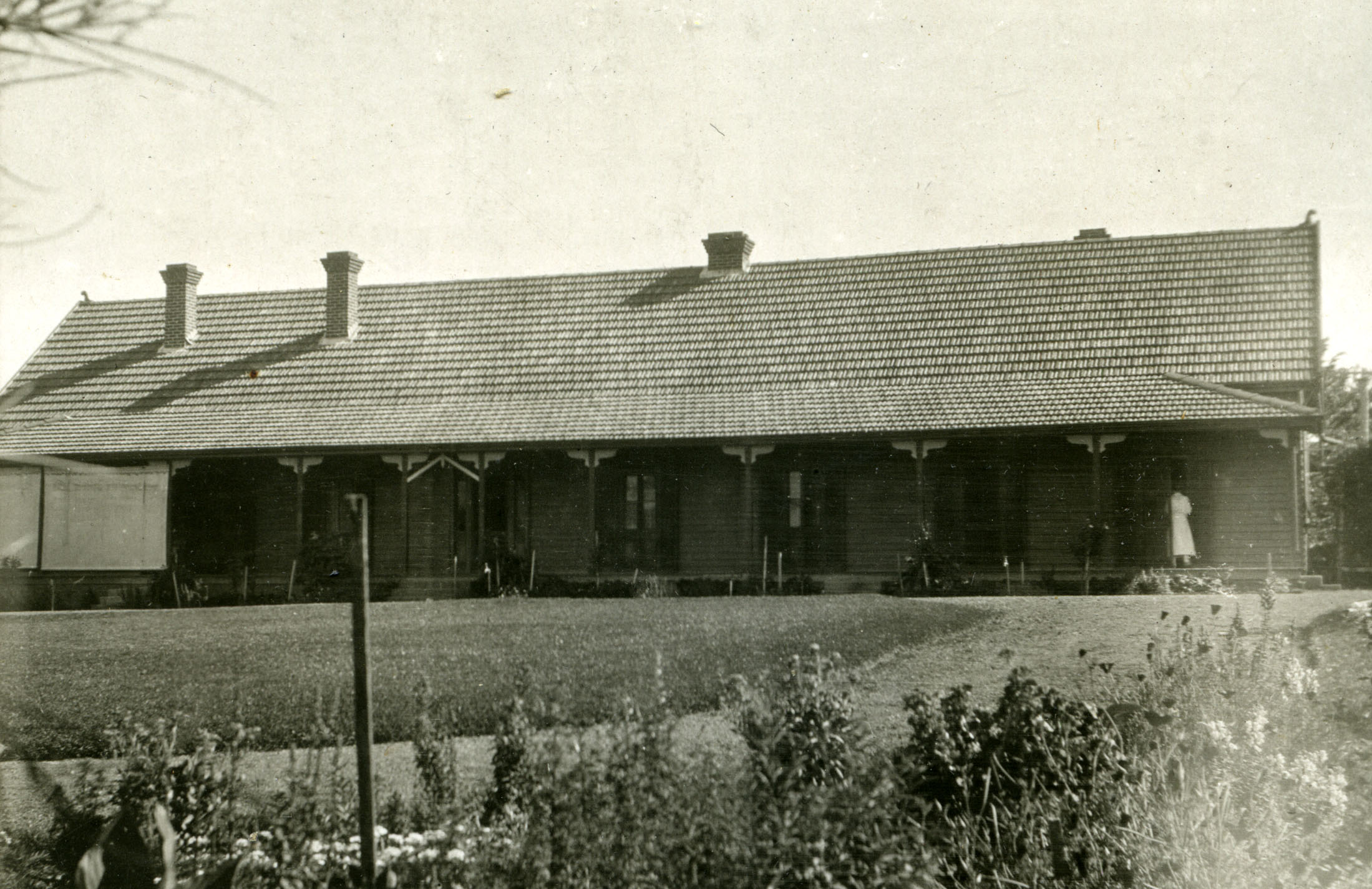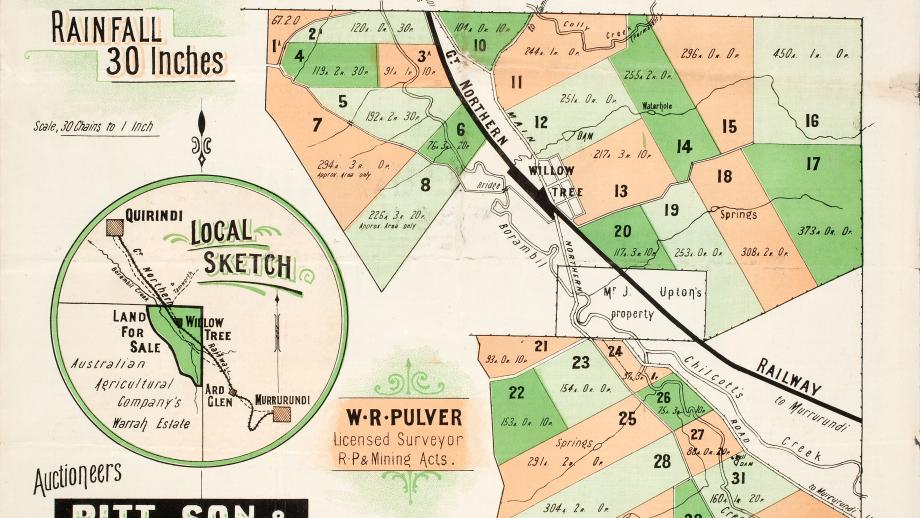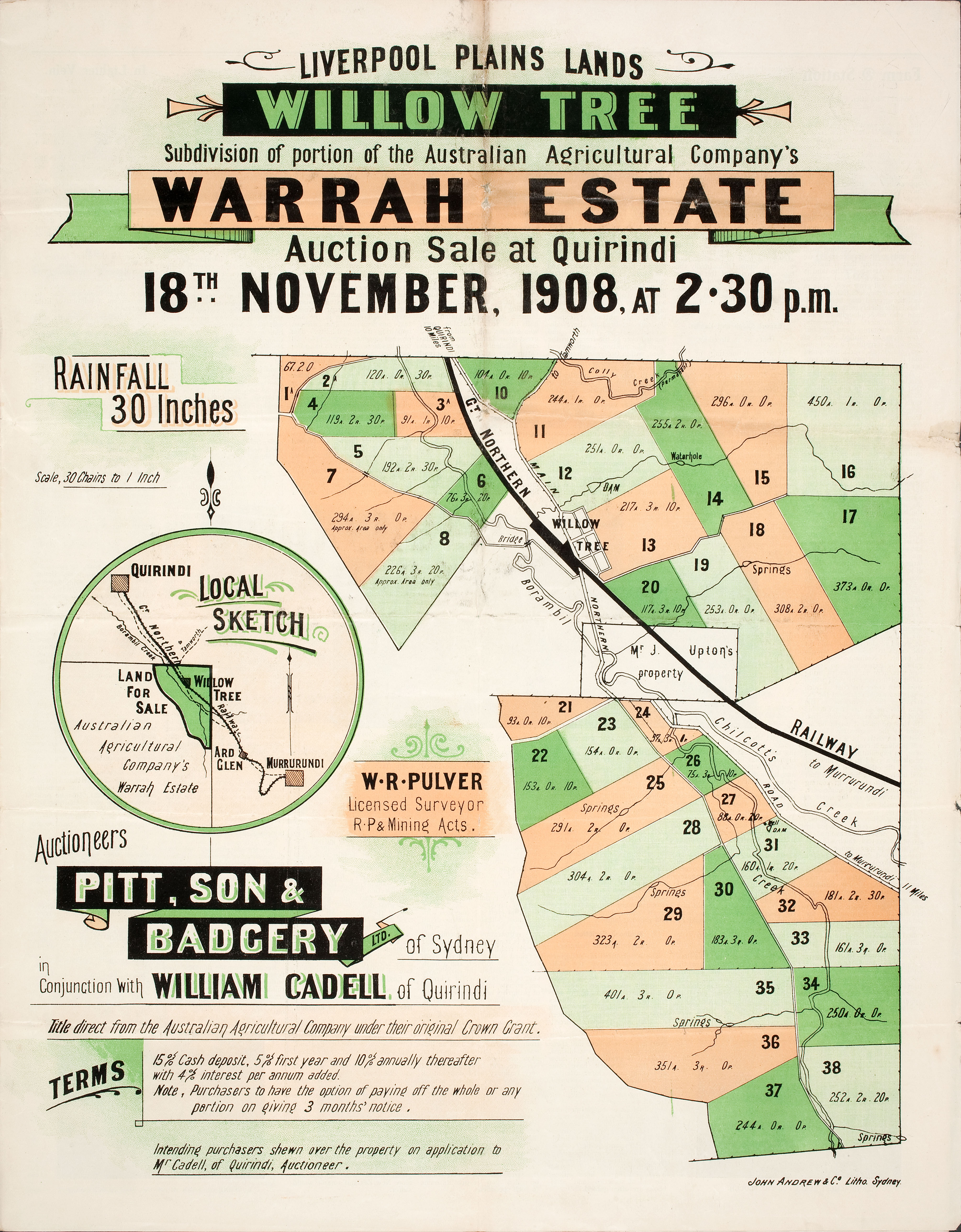The Warrah Estate was taken up by the Australian Agricultural Company in 1833 and was first managed by William Telfer. The first sheep on the Estate were 700 pure Saxon Merinos that had been moved up from the Port Stephens Estate. In February 1834 the Warrah flock was moved north to the Company’s Peel Estate where the conditions were more suitable at the time.
Between the early 1840s and early 1860s most of West Warrah was leased and it wasn’t until the mid-1850s that there was more serious discussion about the future of Warrah, with the need for investment in wells, troughs, and fencing. In 1856-1857 some flocks were moved to Warrah from Port Stephens and the decision was made that Warrah should be developed to fatten some store sheep, as well as steers and bullocks from Gloucester and Nowendoc (a run on the Company Line).
In April 1853, the Company advertised the sale by auction of the 'Willow Tree Inn' situated on the High Road from Tamworth to Murrurundi (with 320 acres) (Sydney Morning Herald, 21 April 1853). The Inn was situated on the northeast corner of the Warrah Estate, just south of Quirindi, and separated by a low range of hills from the Warrah Homestead and most of the pastoral run. The inn was purchased by Solomon and Chivers. It wasn't until the 1870s that Willow Tree was settled, a development very much facilitated by the opening of the Great Northern Railway from Murrurundi to Quirindi in 1877. A railway station was opened north of the Willow Tree Inn, originally named ‘Warrah’, but changed to ‘Willow Tree’ in 1879. It was near here that a small informal village was established, with a school opened in 1881.
In 1861 Samuel Craik took over as Manager at Warrah and under his management and the leadership of new General Superintendent E.C. Merewether, the Company began a more concerted development of the Warrah Estate for sheep breeding and invested heavily in wells, bores, and fencing. The Warrah Estate was divided into two sections: East Warrah (122,600 acres) and West Warrah / Windy (127,000 acres).
When carrying an average amount of stock, Warrah carried approximately 150,000 sheep, 40,000 lambs, and 9,000 head of cattle. The stud for Warrah’s Shorthorn cattle was originally on the Company’s Gloucester Estate. Warrah became well known for its Beef Shorthorn cattle and Merino and Border Leicester sheep. Many of the lareg stud and commercial herds in Queensland and the Northern Territory obtained their foundation stock from Warrah and large numbers of steers and bullocks from the Company's other properties were fattened and finished off at Warrah before selling for top prices at local and metropolitan markets.
Warrah had two woolsheds, with the woolshed located on Windy (West Warrah) being one of the largest in New South Wales. The Windy Woolshed was designed by Fred Menkens and was constructed in 1901 by Thomas and William Cowan. It was fitted with 44 Burgon shearing machines and a hydraulic plant used for pressing and dumping wool bales. Its annual clip filled between 3,000 and 3,500 bales, which were sent by rail to Newcastle before being shipped to London. The Windy Woolshed still stands on Windy Station today, which is now owned by the Romani Pastoral Company.
The long-term overseer and then manager of Warrah was George Fairbairn. Fairbairn arrived at Warrah in 1870, at a time when there wasn’t even a boundary fence on the property. After ten years, Fairbairn succeeded Richard Hudson as manager and spent over 40 years working for the Company.
In 1907, a Border Leicester stud was established at Windy Station, with this stud providing rams for many other stud and commercial breeders. That same year, as the Company grew increasingly concerned at Government moves for Closer Settlement Resumption, the Australian Agricultural Company surveyed and laid out a village at Willow Tree on the Warrah Estate, surrounded by a number of farms. The auction of 46 town lots and 37 farms (nearly 8,000 acres) was held on 18 November 1908, with special trains bringing prospective customers to the area. A further auction was held in November 1914.
Additionally, in 1912, 1923 and after World War II, large areas of land on the Warrah Estate were sold and resumed by the New South Wales Government due to closer settlement movements.
The Warrah homestead portion of the Estate, comprising 5,784 acres, was sold in 1969. This sale followed the sale of 7,000 sub-divided acres on the Estate in 1967. Adjoining areas in The Highlands and south east corner of the Estate were sold by the Company in 1972.
In 1996, after 165 years of ownership, the Company sold Windy Station, the last remaining part of the Warrah Estate.
